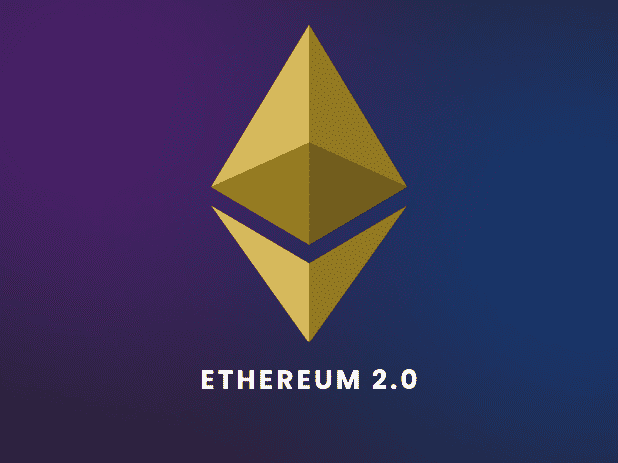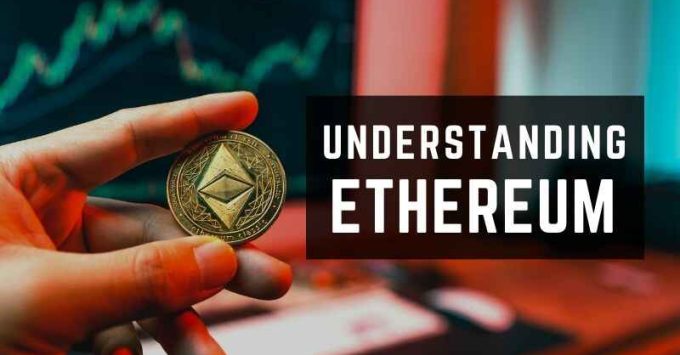Ethereum is a decentralized and open-source blockchain system that features its cryptocurrency, Ether (ETH). It’s a platform for decentralized applications (dApps) and smart contracts allowing users to create and execute code on a blockchain network. Unlike traditional systems, Ethereum’s decentralized nature makes sure that applications and contracts run exactly as programmed without any possibility of censorship, downtime, fraud, or third-party interference.
You have not selected any currency to displayBackground of Ethereum
In 2013, Vitalik Buterin, a programmer involved in Bitcoin magazine, initially conceptualized Ethereum. He proposed developing a more robust platform after being disappointed by Bitcoin’s limited scripting language.
In 2014, developers crowdfunded Ethereum’s development, marking it as one of the earliest Initial Coin Offerings (ICO). The Ethereum Foundation, a non-profit organization, started the development. Ethereum went live on 30 July 2015, with the initial release known as Frontier. This marked the beginning of the Ethereum blockchain, with the first block of Ethereum’s blockchain mined on July 30, 2015.
Ethereum has continued to evolve, with multiple upgrades to improve its scalability, security, and sustainability. These include updates named Homestead, Metropolis, and Istanbul.
Exploring Ethereum
Ethereum possesses several key features that distinguish it from other blockchain platforms. Here are some of the key features:
-
Smart Contracts
Smart contracts are self-executing contracts. They have the terms of the agreement written directly into code and are executed by the Ethereum Virtual Machine (EVM). EVM is the core component of the Ethereum blockchain network. It’s a powerful, sandboxed virtual stack embedded within each full Ethereum node, capable of executing bytecode (compiled smart contract code). It makes sure that these contracts run exactly as programmed without downtime, censorship, fraud, or third-party interference.
-
Decentralized Applications (dApps)
Ethereum allows developers to build and deploy apps. These apps run on the blockchain and benefit from its properties like immutability, security, and decentralization. dApps range from games and marketplaces to decentralized finance (DeFi) platforms and more.
-
Ether (ETH)
Ether is the native cryptocurrency of the Ethereum platform. It’s used to compensate participants who perform computations and validate transactions and as a medium of exchange for transaction fees and services on the network.
-
Gas
Gas is a unit that measures the amount of computational effort required to execute operations including transactions and smart contracts. Users pay gas fees in Ether which encourages miners/validators to include their transactions in the blockchain.
-
Consensus Mechanism
Ethereum originally used Proof of Work (PoW) but is transitioning to Proof of Stake (PoS) with Ethereum 2.0. PoS aims to be more energy-efficient and reduce the risk of centralization that occurs with PoW.

Ethereum 2.0
Ethereum is going through a major upgrade known as Ethereum 2.0 or Eth2. This upgrade aimed to improve the network. Here are the changes introduced with Ethereum 2.0:
- Transition to Proof of Stake (PoS): One of the most significant changes in Ethereum 2.0 is the shift from the current Proof of Work (PoW) consensus mechanism to Proof of Stake. This change aims to make the network more energy-efficient and eco-friendly.
- Sharding: Ethereum 2.0 will introduce sharding to improve scalability and capacity. Sharding involves dividing the network into smaller pieces called shards that can process transactions and smart contracts. This increases the overall capacity of the network and allows it to process many transactions per second.
- Beacon Chain: Launched in December 2020, the Beacon Chain is a new PoS blockchain at the core of Ethereum 2.0. It’s responsible for managing the PoS protocol including validators, rewards, and penalties. Initially, the Beacon Chain operates in parallel with the existing Ethereum chain, with a plan to merge them.
- Docking/Mainnet Merge: The existing Ethereum mainnet (running PoW) will eventually dock or merge with the Beacon Chain. This will mark the end of PoW for Ethereum and the full transition to PoS.
- Increased Security and Reduced Centralization Risks: With PoS and sharding, Ethereum 2.0 aims to increase security and reduce the risks of centralization that are more prevalent in PoW systems.
Ethereum’s Impact on Non-Fungible Tokens (NFTs)
Ethereum’s impact on the world of Non-Fungible Tokens (NFTs) has been transformative. It has provided the foundation for their creation, issuance, and trading.
- Ethereum introduced standards like ERC-721 and ERC-1155 which have become the backbone for NFT creation and exchange. These standards guarantee compatibility and ease of trade across various platforms.
- The Ethereum blockchain has become synonymous with the NFT market. It has enabled artists, musicians, and creators to tokenize their work and sell digital ownership. This has revolutionized the way art is bought, sold, and perceived in the digital age.
- Beyond art, NFTs on Ethereum are expanding into areas like real estate, gaming, and identity verification. This expansion shows the versatility of Ethereum’s blockchain in handling unique digital assets.
Other Real-World Applications
Ethereum’s capability extends into numerous other sectors.
Supply Chain Management:
Ethereum’s transparent and immutable ledger helps in tracking goods from production to delivery, enhancing transparency and accountability in supply chains.
Voting Systems:
Ethereum is also used to create secure, transparent, and tamper-proof digital voting systems. These voting systems will potentially revolutionize electoral processes.
Identity Verification:
With Ethereum, there’s potential for creating decentralized digital identities. Users have more control over their personal information with Ethereum.
Gaming:
Ethereum has given rise to a new genre of blockchain-based games where players have true ownership of their in-game assets which can be traded as NFTs.

Performance of Ethereum in Recent Years
As of January 2024, the performance of Ethereum shows a promising outlook characterized by resilience and growth, despite facing certain challenges. The year has seen a significant bullish momentum for Ethereum, with its price exhibiting an upward trajectory. Currently, the price of 1 ETH is $2,369.63.
Challenges & Criticisms
Ethereum faces several challenges and criticisms despite its innovative features and significant role in the blockchain ecosystem.
-
Scalability Issues
One of the most significant challenges for Ethereum is scalability. The network can handle only a limited number of transactions per second especially during high-demand periods. This limitation has resulted in slower transaction times and higher gas fees.
-
High Gas Fees
During times of network congestion, gas fees escalate rapidly. This makes using Ethereum for small transactions or smart contract interactions expensive and sometimes impractical.
-
Environmental Concerns
Before the Ethereum 2.0 upgrade, the network used a Proof of Work (PoW) consensus mechanism which was energy-intensive due to the mining process required to validate transactions and create new blocks. This raised environmental concerns similar to those associated with Bitcoin mining.
-
Security Risks in Smart Contracts
Writing smart contracts on Ethereum requires a high level of technical expertise and even small errors lead to significant vulnerabilities. The decentralized nature of the platform means that once a smart contract is deployed, it cannot be easily altered. Notable incidents, like the DAO hack, have highlighted these security concerns.

